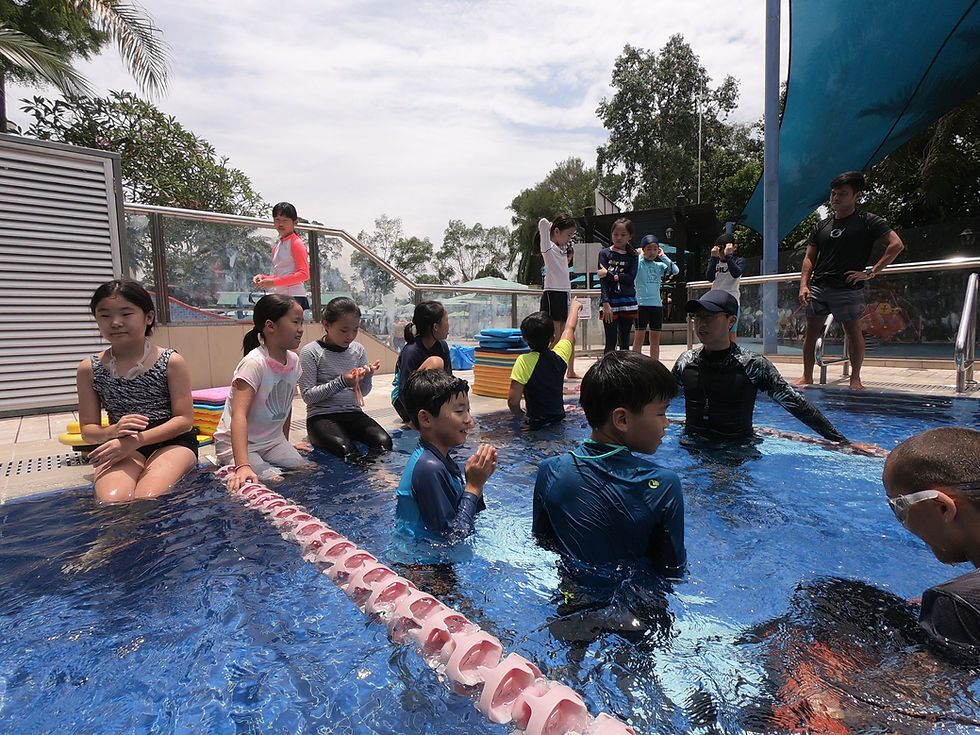Step-by-Step Guide to Teaching Toddler Floating Skills
- SG Sink Or Swim

- Jun 5
- 3 min read

Floating is one of the most important water safety skills toddlers can learn. Before they master strokes or deep-water swimming, young children need to know how to stay calm, lie back, and let the water support them. Teaching toddlers how to float not only builds water confidence but could one day be life-saving.
In this step-by-step guide, we’ll cover how to introduce, practice, and reinforce floating skills for toddlers, with safety, patience, and fun at the heart of every lesson.
🧠 Why Floating Matters for Toddlers
🛟 Safety: In an emergency, the ability to float gives toddlers time to breathe and wait for help.
💪 Confidence: Learning to float helps kids feel secure in the water.
🌊 Foundational Skill: Floating is the gateway to learning strokes, breathing control, and body awareness.
📋 Before You Begin: What You’ll Need
A warm, shallow pool or a designated toddler swim area
Pool toys (optional, for comfort and engagement)
Flotation aids (if necessary for early introduction)
A calm, distraction-free environment
Loads of patience, encouragement, and eye contact
🪜 Step-by-Step: Teaching Toddler Floating Skills
Step 1: Build Trust in the Water
Before floating, your toddler needs to feel safe.
Sit together in shallow water
Pour water over their shoulders and back gently
Use songs and games to create a relaxed mood
Encourage face-in and face-out water play to reduce fear
🧠 Tip: Never rush. If a toddler is scared, return to water play before trying again.
Step 2: Introduce the Back Float with Support
Help them understand what it feels like to be supported by water.
Gently hold the toddler under their back, shoulders, and head
Keep your face close, smile, and maintain eye contact
Encourage them to look up and relax their body
Use phrases like, “Lie like a starfish,” or “Rest on the water like a pillow”
🧠 Tip: Count to 5 or sing a short verse to help them stay relaxed while floating.
Step 3: Use Gentle Movement and Gradual Release
Start giving them more independence in small steps.
Slowly reduce support under the back and neck
Keep a light touch or a hand nearby for reassurance
Encourage stillness and calm breathing
If they start to sink, resume full support and try again
🧠 Tip: Use floatation toys behind the head or arms as training tools.
Step 4: Practice the Front Float (Optional)
Some toddlers feel more secure face-down in shallow water.
Hold them under the belly with arms stretched forward
Let them blow bubbles or hold onto a kickboard
Keep sessions short and fun
🧠 Tip: Always supervise closely during front floats — avoid long face immersion.
Step 5: Make Floating Part of the Routine
Repetition builds comfort and muscle memory.
Include 2–3 float attempts in every pool session
Use positive reinforcement (“You floated all by yourself!”)
Combine with kicking or playful activities
Let them float near the steps or wall for added confidence
🧠 Tip: Celebrate every attempt — even 2 seconds counts as progress!
🏁 Reinforcing the Skill Over Time
Floating isn’t mastered in one day. Continue reinforcing through:
Games: “Starfish freeze,” floating races, or counting challenges
Songs: Singing during floats keeps toddlers calm and occupied
Parental support: Let toddlers float while holding onto your hands or arms
Consistency: Regular water exposure helps toddlers stay relaxed
🚫 Common Mistakes to Avoid
❌ Forcing a child to float before they’re ready
❌ Holding them too rigidly (they won't feel water support)
❌ Letting them float unattended
❌ Expecting perfect form — it’s about calmness, not perfection
🧡 Final Thoughts
Teaching toddlers to float is a gradual but powerful skill that builds the foundation for water safety and future swim learning. With a calm approach, lots of patience, and consistent exposure, toddlers will learn to trust the water — and themselves.
Start simple, go slow, and always prioritize safety and emotional comfort.





Comments